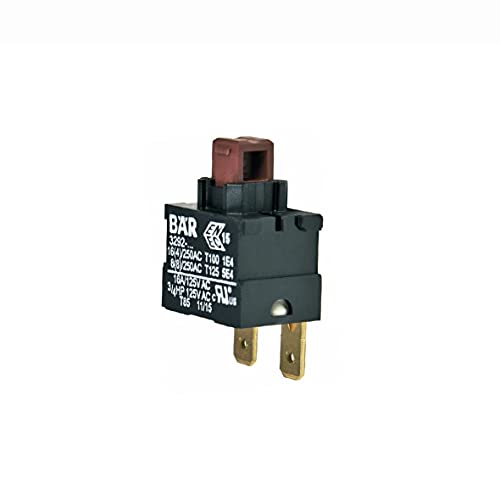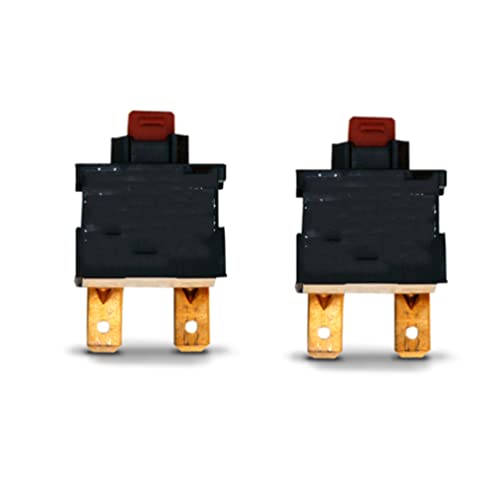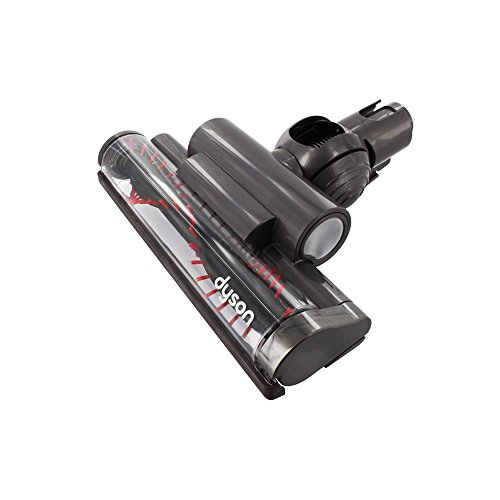When your Dyson DC23 vacuum cleaner refuses to power up, it can be frustrating and disruptive to your cleaning routine. This powerful canister vacuum is known for its reliability, but like any electronic device, it can experience issues that prevent it from turning on. The good news is that many of these problems can be diagnosed and fixed without professional help.
Affiliate disclosure: As an Amazon associate, We'll earn a commission for every successful order through our affiliate links in the article. However, you won’t be charged anything for this.
Before rushing to a repair shop or considering a replacement, it’s worth exploring some common causes and solutions for a non-responsive Dyson DC23. In this comprehensive guide, we’ll walk through various troubleshooting steps, from basic power checks to more advanced diagnostics. We’ll also cover maintenance tips to help prevent future issues and keep your vacuum running efficiently for years to come.
Power Supply Issues: First Steps to Diagnose
Checking the Basics: Power Cable and Socket
The most common reason for a Dyson DC23 not turning on is often the simplest – power supply problems. Before diving into more complex troubleshooting:
- Examine the power cable for any visible damage, cuts, or fraying along its entire length
- Ensure the plug is firmly inserted into the wall socket
- Try a different wall outlet to rule out problems with your home’s electrical supply
- Test the original outlet with another device to confirm it’s working properly
Many users discover that loose connections or faulty outlets are the culprits behind their vacuum’s power issues. If your power cable shows signs of damage, it should be replaced immediately as it poses both a fire hazard and prevents proper operation of your vacuum.
If you’ve found damage to your power cable, it is important to replace it with a new one.
Examining Internal Power Components
If the external power supply checks out, the issue may lie with internal components:
- Inspect the point where the power cord enters the vacuum for any damage
- Check if the cord’s strain relief is intact and not pulling away from the vacuum body
- Look for any burn marks around the power entry point, which could indicate an electrical short
In some cases, the internal wiring may have become disconnected or damaged. This typically requires opening the vacuum housing, which should only be attempted if you’re comfortable with basic electrical repairs.
Overheating Protection: A Common Culprit
How the Thermal Cut-Out Works
The Dyson DC23 features a built-in thermal cut-out system that automatically shuts off the vacuum when it overheats. This safety feature prevents damage to the motor and other components but can be mistaken for a complete power failure.
If your vacuum was working normally and suddenly stopped:
- Unplug the vacuum and allow it to cool completely (at least 30-60 minutes)
- Once cooled, try turning it on again
- If it powers up, the thermal cut-out was likely activated
The thermal cut-out typically triggers when the vacuum is used continuously for extended periods, especially in hot environments or when the airflow is restricted.
Preventing Future Overheating Issues
To avoid triggering the thermal protection system:
- Use the vacuum in shorter intervals during heavy cleaning sessions
- Ensure all filters are clean and properly installed
- Regularly check and clear any blockages in the hose and attachments
- Empty the dust container before it reaches maximum capacity
- Store the vacuum in a cool, dry place between uses
Following these preventative measures will significantly reduce the likelihood of overheating problems and extend the life of your Dyson DC23.
Blockage Detection: Clearing Obstructions
Identifying Blockages in Your Vacuum
Blockages can prevent proper airflow, causing the motor to work harder or fail to start altogether. The Dyson DC23’s sophisticated design means blockages can occur in several locations:
- The main suction hose
- The wand or extension tube
- The dust canister entry point
- Around the cyclone assembly
- At the floor head or attachment inlets
To thoroughly check for blockages:
- Disconnect the vacuum from power
- Remove the dust canister and empty it completely
- Detach the hose from both the vacuum body and the wand
- Look through the hose toward a light source to check for obstructions
- Remove any attachments and inspect their entry points
- Check the cyclone assembly entry points for debris
Clearing Stubborn Blockages
For stubborn blockages:
- Use a broomstick handle or similar long object to gently push through the hose (never use sharp objects)
- For the wand, remove any attachments and look through it to identify blockages
- Tap the components gently against a solid surface to dislodge stuck debris
- Use compressed air to blow out difficult-to-reach blockages
Many users report that thorough blockage removal has restored power to their seemingly “dead” Dyson DC23 vacuums.
Filter Maintenance: Critical for Performance
How Dirty Filters Affect Power
The Dyson DC23 relies on multiple filters to maintain suction power and protect the motor. When these filters become clogged, they can restrict airflow to the point where the vacuum fails to start or shuts down quickly after starting.
The DC23 has two main filters:
- Pre-motor filter (washable)
- HEPA post-motor filter (typically needs replacement)
Proper Filter Cleaning Procedure
To clean the pre-motor filter:
- Remove the clear dust bin
- Locate the pre-motor filter (usually a foam filter)
- Rinse it under cold water until the water runs clear
- Squeeze out excess water (do not wring)
- Allow to dry completely for at least 24 hours before reinstalling
- Never use detergents or washing machines for cleaning
For the HEPA post-motor filter:
- Locate the filter housing (typically at the back of the vacuum)
- Remove the filter carefully
- Tap it gently to remove loose dust
- If it’s extremely dirty, consider replacement as HEPA filters typically cannot be washed effectively
Remember, using your Dyson with wet filters can damage the motor and potentially cause electrical issues. Always ensure filters are completely dry before reinstallation.
If your HEPA filter is extremely dirty and needs replacement, here is a replacement option.

Official replacement HEPA post filter for DC23 with effective microscopic particle capture
Motor and Electrical Component Diagnostics
Testing the Motor Without Disassembly
A failed motor is often the most serious cause of power issues in a Dyson DC23. Interestingly, you can test for motor failure without completely disassembling the vacuum:
- Unplug the vacuum for safety
- Look for any discoloration on visible parts of the motor, which may indicate burnout
- Listen for any unusual sounds when attempting to start the vacuum (grinding, clicking, or buzzing)
For a more definitive test (for technically inclined users only):
- Plug in the vacuum and position the power switch to “on”
- Quickly unplug it at the wall
- Using an insulated screwdriver, briefly touch both prongs of the power plug together
- If you see a spark, the motor’s capacitor is still holding charge, which may indicate the motor itself is faulty (open circuit)
CAUTION: This test involves electricity and should only be performed if you understand electrical safety. Improper testing can result in electric shock.
Checking the Power Switch
A faulty power switch is another common cause of startup problems:
- Unplug the vacuum for safety
- Locate the power switch assembly (usually requires partial disassembly)
- Inspect for visible damage or debris
- If you have a multimeter, test for continuity when the switch is toggled
If the switch fails to show continuity when activated, it needs replacement. Replacement switches are relatively inexpensive and can be found through Dyson parts suppliers.
If the power switch is faulty, it’s important to replace it with a compatible one.

Official replacement for DC23 with exact fit and durability

Cost-effective dual-pack with extended warranty

Budget-friendly single-unit replacement
Troubleshooting the Turbine Head
Why Your Roller Brush Stops Spinning
The Dyson DC23 turbine head contains a roller brush that should spin when the vacuum is on. If the vacuum powers up but the brush doesn’t spin:
- Check for thread, hair, or string wrapped around the brush
- Ensure the turbine mechanism isn’t jammed with debris
- Verify that the connection between the head and wand is secure
Unfortunately, if these checks don’t resolve the issue, the turbine head itself may be faulty. Unlike some components, the turbine head mechanism cannot typically be repaired and requires complete replacement.
Replacing the Turbine Head
If you determine that your turbine head needs replacement:
- Purchase a compatible replacement head from Dyson or authorized retailers
- Remove the old head by pressing the release button and pulling it away from the wand
- Attach the new head until it clicks securely into place
- Test to ensure the roller brush spins properly when the vacuum is turned on
A new turbine head will restore the DC23’s carpet cleaning ability and is a worthwhile investment if the rest of the vacuum is functioning properly.
If your turbine head is faulty and needs replacement, here is a replacement option.

Official replacement turbine head for Dyson canister vacuums
Circuit Board Problems and Solutions
Identifying Circuit Board Failures
The Dyson DC23’s electronic circuit board controls various functions and can be a source of power issues. Signs of circuit board problems include:
- Vacuum turns on briefly then shuts off
- Unusual electrical odors when attempting to start
- Intermittent power issues
- LED indicators (if present) behaving erratically
Examining the circuit board requires disassembly of the vacuum:
- Unplug the vacuum and remove any external components
- Open the main housing following the seam lines (usually requires removing several screws)
- Locate the circuit board (typically near the power entry point)
- Inspect for burnt components, loose connections, or corrosion
Circuit Board Repairs and Replacement
Circuit board issues generally require either:
- Reseating loose connections
- Replacing the entire board
- Soldering repairs to damaged connections (advanced)
For most users, replacement is the most practical option. Replacement circuit boards can be purchased from Dyson parts suppliers or electronics repair shops. When installing a new board, ensure all connections are secure and properly oriented before reassembling the vacuum.
Frequently Asked Questions (FAQ)
Why does my Dyson DC23 start and then immediately stop?
This behavior typically indicates either an overheating issue or a blockage detection system activation. First, check for and clear any blockages in the hose, wand, and attachments. Next, ensure all filters are clean and properly installed. If the problem persists, the thermal cut-out may be activating due to motor strain or overheating. Allow the vacuum to cool completely for at least an hour before attempting to use it again.
Can I repair the Dyson DC23 turbine head myself?
Unfortunately, the turbine head on the Dyson DC23 is not designed to be user-serviceable beyond basic cleaning and removal of wrapped debris. If the turbine head is confirmed to be faulty (roller brush not spinning despite a clean, debris-free mechanism), complete replacement is typically the only viable solution. Replacement heads are available from Dyson and authorized retailers.
How often should I clean the filters on my Dyson DC23?
Dyson recommends washing the pre-motor filter at least once a month for regular household use. However, if you have pets or use the vacuum in dusty environments, more frequent cleaning (every 2-3 weeks) may be necessary. The post-motor HEPA filter should be replaced approximately every 6-12 months, depending on usage. Regular filter maintenance is critical for preventing power issues and extending the life of your vacuum.
Is it worth repairing my Dyson DC23 if the motor has failed?
This depends on several factors. A motor replacement can be expensive, often costing 50% or more of the price of a new vacuum. Consider the age of your DC23, the cost of the repair versus replacement, and whether other components are showing signs of wear. If your vacuum is over 7-8 years old and the motor has failed, it might be more economical to invest in a newer model with updated technology and a fresh warranty period.
Why is my Dyson DC23 making unusual noises but still running?
Unusual noises from your Dyson DC23 while it’s running could indicate several issues: debris caught in the brush roll, a partially blocked hose, bearing problems in the motor, or loose components. First, check for and remove any visible obstructions. If the noise persists, inspect the vacuum for any loose parts or connections. Grinding or high-pitched whining noises often indicate motor bearing issues, which may eventually lead to complete motor failure if not addressed.
Conclusion
The Dyson DC23 is a durable and powerful vacuum cleaner that can provide many years of reliable service with proper maintenance. When faced with power issues, following the systematic troubleshooting steps outlined in this guide can help identify and resolve most problems without professional assistance.
From simple power supply checks to more advanced motor diagnostics, addressing these issues promptly can extend the life of your vacuum and save you the cost of premature replacement. Remember to perform regular maintenance, including filter cleaning and blockage checks, to prevent future power problems.
If you’ve exhausted all troubleshooting options and your Dyson DC23 still won’t turn on, consulting with a certified Dyson repair service may be your next step. They can provide expert diagnosis and repair services for more complex issues, potentially giving your trusted vacuum cleaner a new lease on life.






